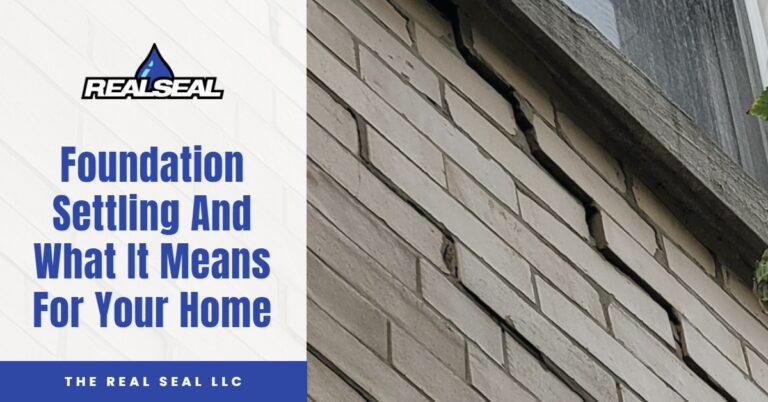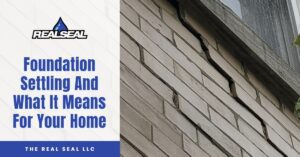Not every homeowner knows what foundation settling is. That’s why we wrote this article. Follow along. Here, you’re going to learn what foundation settling is, what it means for your home, why your foundation is settling, how to repair any settling, and finally, how to prevent foundation settling.
What Is Foundation Settling?
There are two types of settling that could affect your foundation: uniform and differential.
Uniform Settlement – When your home is first built, it will slightly settle into the soil underneath it. This is called uniform settlement. This settlement should be even and under fractions of an inch. Any settlement larger than that is cause for concern.
Differential Settlement – This type of settlement is when your foundation settles at uneven or unequal rates. Differential settlement places stress on your foundation, causing a variety of issues such as sticking windows and doors, bowing walls, and foundation cracks.
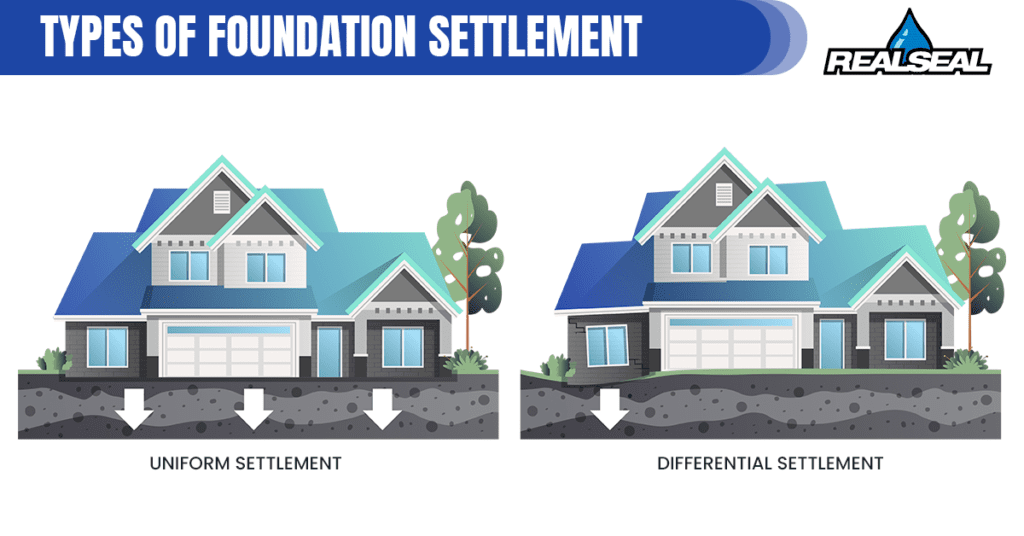
What It Means For Your Home
Differential settlement at large rates means trouble. Here are a few things that can happen if your foundation is suffering from differential settlement.
- Your doors and windows can start to stick – Foundation settling can cause your doors and windows to stick or not close properly.
- Your floors can start to bow – Foundation settling can cause your floors to bow, sink, or become uneven.
- Your walls and floors could separate – Foundation settling can cause your walls and floors to separate, even if the movement is slight.
- Your floors can begin to crack – Foundation settling can form small or large floor cracks that run from one wall to another.
- Your wallpaper can start to tear – Foundation settling can cause your wallpaper to tear, revealing hidden cracks on your walls.
- Your walls can start to rotate – This is when the outside of your foundation sinks deeper into saturated soil, while the inside edge of your foundation, which sits on drier soil, lifts up. This can cause your walls to rotate.
- Diagonal cracks can form near the corners of doors and windows, running to the ceiling – Any size drywall cracks are cause for concern.
- Your moldings could separate – Foundation settling can cause your moldings, floors, walls, and ceilings to all move separately.
- Your block foundation walls could develop stair-step cracks – Foundation settling can form stair-step cracks in your concrete block walls or the brick facia outside your home.
- Your chimney or porch could separate from the rest of your home – This can be because of two reasons. One, the foundation under your home is settling. Or two, there’s a problem with the foundation directly under your chimney or porch. (Call a professional for the best answer.)
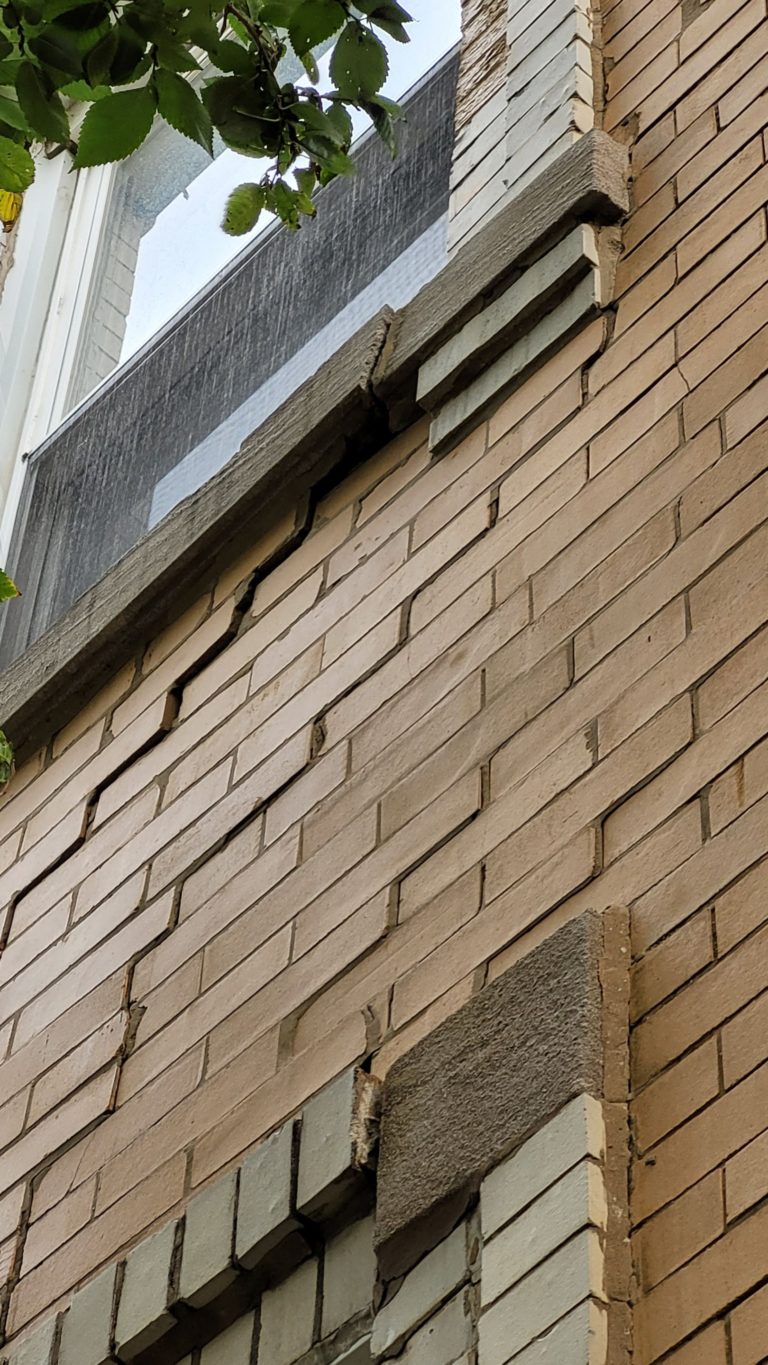
Why Is Your Foundation Settling?
Here are a few reasons why your foundation is settling.
Buried material is starting to degrade – Sometimes, when your foundation is poured, organic and construction material can get buried. That buried material can break down and leave behind voids in your soil.
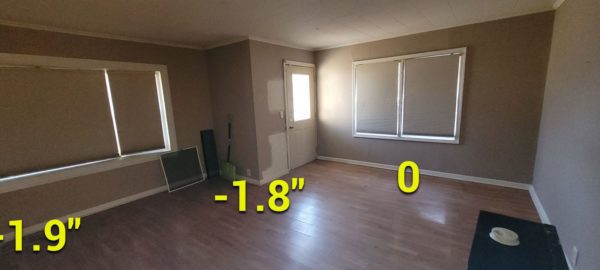
The soil underneath your foundation was improperly backfilled/compacted – The soil underneath your foundation needs to be compacted and pressed together as tightly as possible. Compaction decreases the space between soil particles, lowering the chances for pockets to form. If your builders forget to do this, or it’s done improperly, it can cause your foundation to settle.
Existing soil conditions are causing your foundation to settle – If the soil underneath your foundation is not strong enough, your foundation can begin to settle. Another common example of problematic soil is expansive soil. Expansive soil swells when it absorbs water and shrinks when it dries. This swelling-shrinking cycle places stress on your foundation and can cause it to settle.
The soil under your foundation can wash away – The landscape around your home should allow water to drain away from your foundation and not towards it. If you don’t have proper grading, or you don’t have a drainage system to collect pooling water, the soil under your foundation can wash away.
Problematic trees and their roots – A tree’s root system can be twice the size of its canopy. If you have large trees near your foundation, their roots can start to crawl under your home and drink all the moisture in the soil. If your soil starts to dry, pockets can form under your foundation, causing it to settle. For this reason, most experts recommend removing large trees that are too close to your home.
Soil creep (downhill creep) – If your home was built on the side or near a hill, your foundation could experience soil creep. During or after heavy rain, soil can slide down your hill and cause lateral movement against your foundation. This movement can cause your foundation to shift or settle.
How To Repair Foundation Settling
Foundation settling usually occurs because the soil underneath your home is not strong enough. In this case, your home’s foundation needs extra support. Here are two solutions that experts recommend to counter foundation settling.
Steel push piers – Steel push piers are long piles that are pushed deep into the soil underneath your foundation. Their goal is to reach all the way down under your home until they find load-bearing soil. Once they reach strong enough soil, hydraulic jacks lift your foundation back to the maximum practical level or the ultimate amount of foundational lift achievable before the piers cause any damage to your home.
Helical piers – Also known as anchors, piles, or screwpiles, helical piers are another pier system used to lift your home. Instead of being pushed underneath your foundation, they are twisted like corkscrews until they find load-bearing soil. Once they reach stronger soil, hydraulic jacks lift your foundation back to the maximum practical level. These piers are great because they don’t require extensive excavation work and can be installed in any weather.
Both of these pier systems fall under the category of underpinning. Read more about underpinning here.
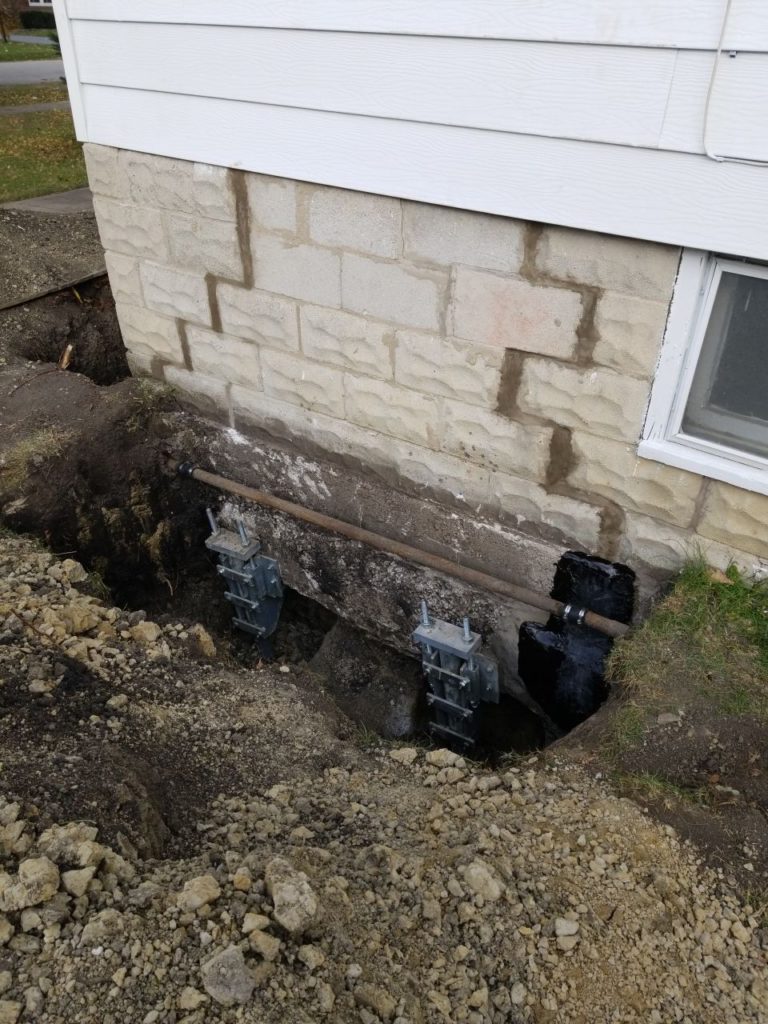
How To Prevent Foundation Settling
Two main reasons your foundation is settling are because of differential settlement and water absorption. So the goal is to prevent water from draining and seeping into your soil. Here’s what you can do.
- Add a drain tile system to collect water under and around your foundation.
- Add a sump pump to eject the collected water out of your home.
- Add a French drain to gather pooling water in your yard and send it off.
- Add gutter and downspout extensions to avoid water dropping at the base of your foundation.
Read more about these foundation drainage methods here.
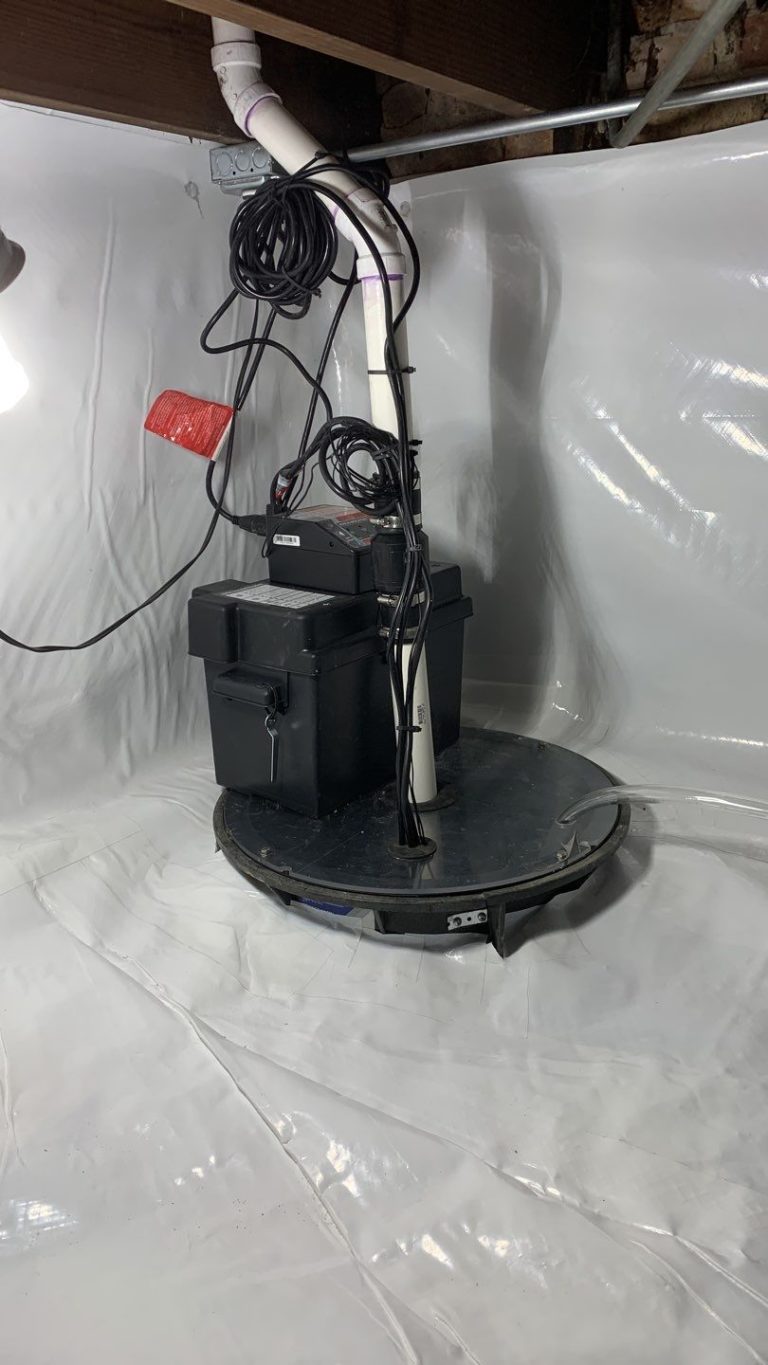
The Real Seal Can Help You
If you live in the Greater Chicago area and you have foundation settling, who do you call? Get in touch with The Real Seal. Call us today, and we’ll get you started with an in-depth inspection, free repair estimate, and a list of our finest solutions. We also provide basement waterproofing, crawl space encapsulation, crawl space repair, concrete leveling, and more.
